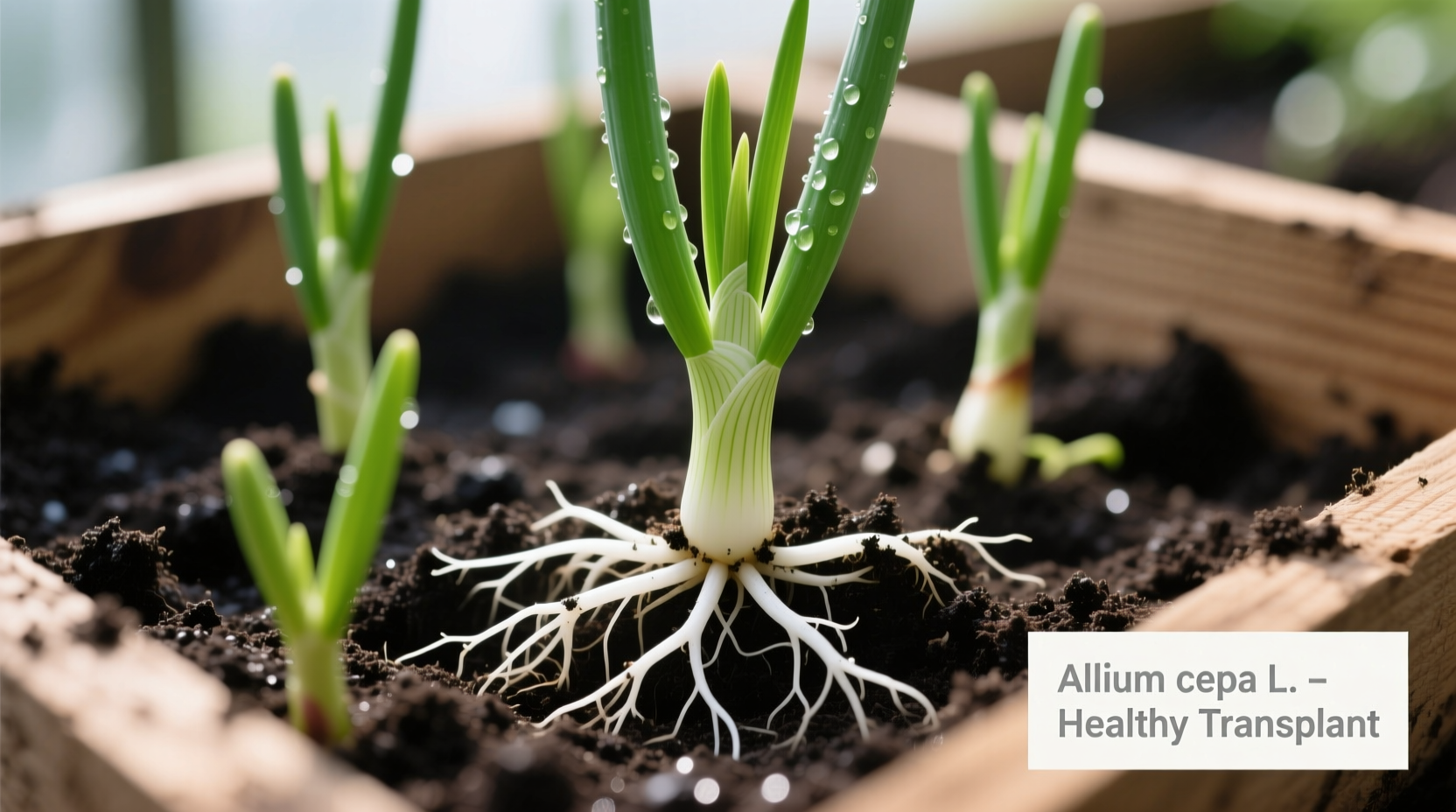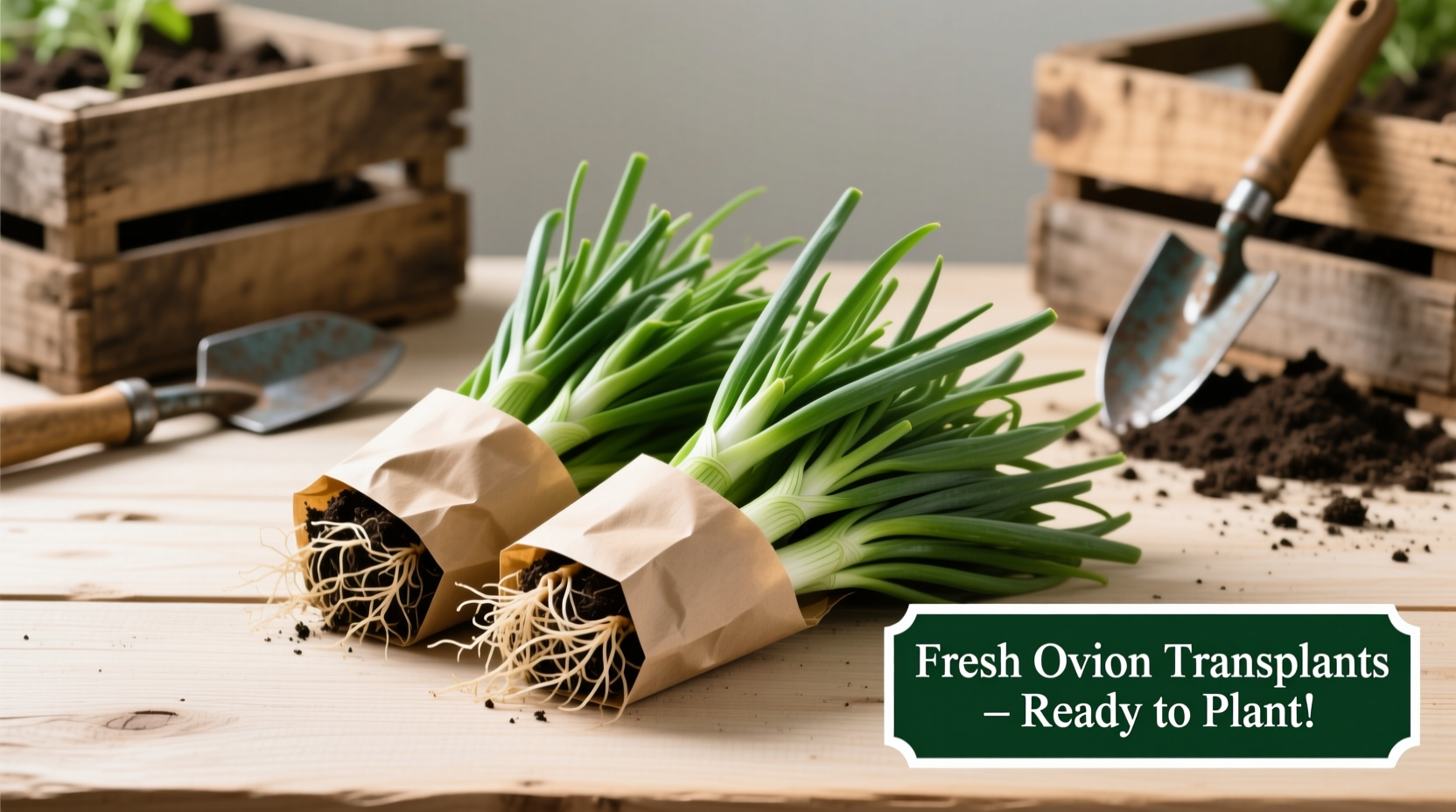Onion transplants are young onion seedlings ready for planting, typically available for purchase from late winter through early spring. The best time to buy depends on your USDA hardiness zone, with northern growers ordering in February-March and southern growers in November-January. Quality transplants should be pencil-thick, disease-free, and properly stored at 32-35°F until planting.
Discover exactly when to buy onion transplants for your region, how to select the healthiest plants, and what to expect for successful harvests. This guide cuts through the confusion with science-backed timing recommendations, visual quality indicators, and practical planting strategies used by experienced gardeners.
Why Choose Onion Transplants Over Seeds
Onion transplants give home gardeners a significant advantage over starting from seeds. According to the Penn State Extension, transplants typically yield 30-50% larger bulbs because they've already overcome the critical germination phase under controlled conditions. The University of Georgia's agricultural research shows transplants mature 2-3 weeks faster than seed-started plants, crucial for regions with shorter growing seasons.
"Transplants eliminate the guesswork of seed germination rates and early-season pest vulnerability," explains Dr. Robert Westerfield, vegetable specialist at UGA. "For most home gardeners, especially beginners, transplants dramatically increase success rates."

Understanding Onion Transplant Types and Varieties
Not all onion transplants are created equal. Your selection should match your geographic location and culinary preferences. Day-length requirements determine which varieties will properly form bulbs in your region:
| Variety Type | Best For Zones | Harvest Time | Storage Life | Flavor Profile |
|---|---|---|---|---|
| Long-Day Onions | 3-5 (Northern) | July-August | 6-8 months | Strong, pungent |
| Intermediate-Day | 5-7 (Midwest) | June-July | 4-6 months | Balanced |
| Short-Day Onions | 7-10 (Southern) | May-June | 2-4 months | Sweet, mild |
When to Purchase Onion Transplants by Region
Timing your purchase correctly ensures you receive vigorous plants ready for your soil conditions. The USDA Plant Hardiness Zone Map provides the framework, but microclimates matter:
- Northern Zones (3-5): Order in February, plant as soon as soil can be worked (late March-April)
- Midwest Zones (5-7): Order in March, plant early to mid-April
- Southern Zones (7-10): Order in November-January, plant December-February
"Many gardeners make the mistake of waiting too long to order northern varieties," notes the University of Minnesota Extension. "Reputable suppliers often sell out by early March because commercial growers secure the majority of transplants first."
How to Identify Quality Onion Transplants
Not all available transplants deliver equal results. Use these professional selection criteria before purchasing:
Visual Quality Indicators
- Size: Ideal transplants measure 1/8 to 1/4 inch in diameter - pencil-thick
- Color: Vibrant green tops without yellowing or browning
- Roots: White, fibrous roots (avoid brown, mushy roots)
- Condition: No signs of mold, disease, or insect damage
Storage and Handling Requirements
Proper storage before planting significantly impacts survival rates. Research from Cornell University shows transplants stored above 40°F for more than 48 hours experience 25% higher transplant shock. The Oregon State University Extension recommends:
- Refrigerate upon arrival at 32-35°F
- Keep bundled plants moist but not wet
- Plant within 7-10 days of receipt
- Never allow roots to dry out before planting
What to Expect for Pricing and Quantities
Understanding typical pricing structures helps avoid overpaying while ensuring quality. Market data from agricultural suppliers shows consistent patterns:
- 10-25 plants: $3-6 (ideal for small gardens)
- 50-100 plants: $0.15-0.25 per plant
- 250+ plants: $0.10-0.15 per plant (wholesale rates)
Be cautious of prices significantly below these ranges, which often indicate older stock or poor quality. Reputable suppliers typically provide variety specifications, planting instructions, and germination guarantees.
Planting and Care for Maximum Yield
Proper planting technique determines your harvest success more than any other factor. Follow these research-backed methods:
- Soil preparation: Amend with 2-3 inches of compost, ensuring pH 6.0-6.8
- Planting depth: Set transplants so only the very top remains visible
- Spacing: 4-6 inches between plants in rows 12-18 inches apart
- Watering: 1 inch per week, consistent moisture critical during bulb formation
- Fertilizing: Side-dress with nitrogen when tops reach 6 inches
The University of Wisconsin Extension emphasizes that inconsistent watering during bulb formation causes splitting and reduces storage life. "Onions need steady moisture - drought followed by heavy rain creates onion doubles and reduces quality," states their vegetable production guide.
Avoiding Common Onion Transplant Mistakes
Even experienced gardeners make these preventable errors that reduce yields:
- Planting too deep: Buried growth plates prevent proper bulb development
- Ignoring day-length requirements: Wrong varieties won't bulb properly
- Over-fertilizing with nitrogen: Creates excessive top growth at bulb expense
- Planting too early: Frost damage stunts growth and invites disease
- Crowding plants: Reduces bulb size and increases disease risk
"The single biggest mistake I see is gardeners trying to save transplants that arrived in poor condition," says agricultural extension agent Martha Smith. "It's better to request replacements than struggle with weak plants that never recover."
When Onion Transplants Aren't Your Best Option
While transplants work well for most home gardeners, certain situations warrant alternative approaches:
- Very short seasons: Consider starting seeds indoors 8-10 weeks before last frost
- Unique heirloom varieties: Many specialty onions only available as seeds
- Large-scale planting: Direct seeding more economical for 100+ plants
- Specific disease resistance: Some resistant varieties only available as seeds
For gardeners in zones 8-10, the University of Florida Extension recommends short-day varieties like 'Texas Super Sweet' or 'Granex' for best results, typically planted from December through February.











 浙公网安备
33010002000092号
浙公网安备
33010002000092号 浙B2-20120091-4
浙B2-20120091-4